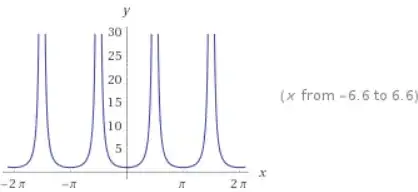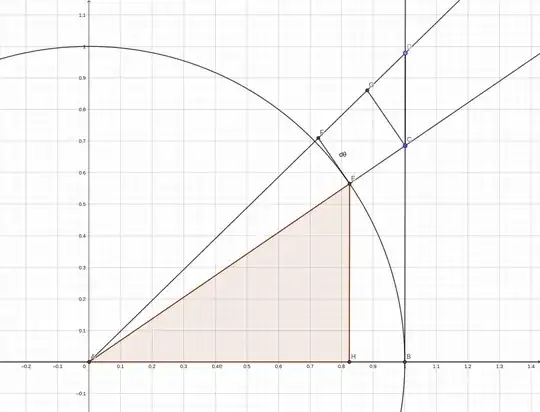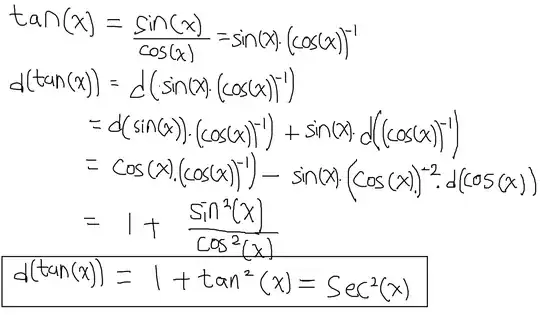First, look at the graph of $\tan(x)$.

It has vertical asymptotes at integer multiples of $\dfrac{\pi}{2}$ and is undefined at $-\dfrac{\pi}{2}$ and $\dfrac{\pi}{2}$. Observe that from $-\dfrac{\pi}{2} \leq x \leq \dfrac{\pi}{2}$, the slope of $\tan(x)$ is always increasing. Notice that it increases faster from $-\dfrac{\pi}{2} \leq x \leq -\dfrac{\pi}{4}$ and from $\dfrac{\pi}{4} \leq x \leq \dfrac{\pi}{2}$. Then, let's take a look at the graph of $\sec^2(x)$.

Observe that $\sec^2(x)$ is always positive as the slope of $\tan(x)$ was always positive. Also observe that $\sec^2(x)$ has vertical asymptotes at integer multiples of $\dfrac{\pi}{2}$. If we zone in on $-\dfrac{\pi}{2} \leq x \leq \dfrac{\pi}{2}$, then we see that the value of $\sec^2(x)$ is greater as we approach $x=-\dfrac{\pi}{2}$ or $x=\dfrac{\pi}{2}$. This is because we can think of the derivative as slope and previously saw that the slope was greatest near the asymptotes.
Therefore, it is natural for $\sec^2(x)$ to be the derivative of $\tan(x)$. The same technique will work for $\sin(x), \cos(x)$, and many others. If you are uncomfortable with the algebra then it is best draw a function and its derivative on graph paper.



